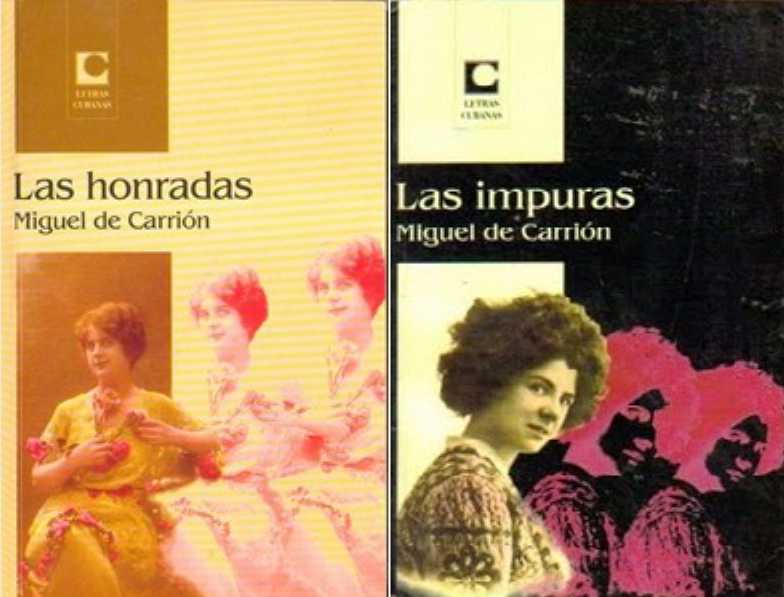4.2.3.2 “The Honorable Ones” and “The Impure Ones”, by Miguel de Carrión (1875 – 1929)

“Las Honradas” and “Las Impuras” were Miguel de Carrión’s best-known works, published in 1917 and 1919, respectively. Both explore the feminine universe in terms of the outdated morality characteristic of the bourgeois class; they also connect this with the masculine personality and its dominating power through the realm of sexual and amorous passion.
“Las Honradas” represented a healthy movement in Cuban literature, exploring a somewhat taboo topic: female infidelity and the legitimization of sexual desire in women, as well as abortion as an overlooked issue in social events, thereby serving as a mirror for society.
The character of Victoria and her experiences, although presented with a desire for psychological depth rather than as a social archetype, constitute a good example of the female characters of the period, which emerged in the heat of the prevailing situation and all its economic and social dichotomies. Her “lapse,” her lover’s abandonment, her repentance, and her return to her husband present a quite credible emotional interplay, inherited from French naturalism, especially that of Emile Zola.
“Las Impuras,” both in its theme and in its locations and characters, is closely related to “Las Honradas” in its incomplete, though not entirely achieved, immersion in the feminine; like two sides of the same coin. However, Teresa represents the most heart-rending submission to the masculine being, even overcoming social conventions, crushed in her individuality by her brother and her lover.
In this piece, the social situation and the harmful influence of administrative corruption take a more prominent role, yet the approach remains psychological, focused on the most intimate conflicts of the feminine. At times, the lines between Teresa’s and Victoria’s attitudes are blurred, perhaps in an effort to demonstrate women’s powerlessness in the face of their circumstances, from a deterministic perspective of human behavior.
In both pieces, although the social background is not the subject of detailed analysis, the allusions to the social divide, accentuated by North American penetration, are intelligible. Through the characters, and by broadening our perspective, we can see how the prevailing political and social context and morality simultaneously shaped rebellious or escapist attitudes, making it impossible for them to assume their necessary transformative role.








